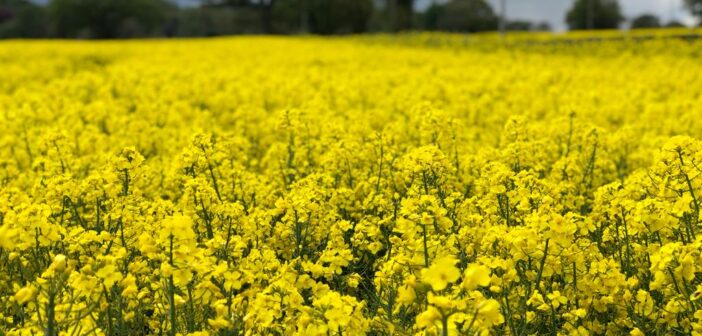There is enough risk associated with growing oilseed rape, so it is important to protect yield potential wherever possible right through to the end of the growing season, is the advice of leading plant breeders Limagrain UK.
“There is no point in growing a crop and leaving it exposed to risks that are avoidable when it is possible to secure yield – and this is exactly what the genetic trait pod shatter trait offers,” says Liam Wilkinson, product manager for oilseed rape for Limagrain UK.
“Choosing to grow a variety with built in pod shatter resistance is one of the most important things you can do,” he says. “Last year some crops were devastated by storms whilst others appeared relatively unscathed and this comes down to the value of pod shatter resistance.”
Not all varieties carry the genetic trait, however all Limagrain hybrids carry pod shatter resistance which is reflected in their high yields and leading positions on the AHDB Recommended List such as re Attica, LG Wagner, LG Auckland, Ambassador, LG Aviron, Aurelia, LG Antigua and the Clearfield variety Constructor.
Pod shatter is a natural process for seed dispersion in oilseed rape, however on farm it can result in significant seed loss caused by heavy wind, rain, hailstones, or the combine passing through the crop, points out Mr Wilkinson.
“The pod shatter (POSH) resistance gene was originally introduced into OSR together with the restorer gene from radish. Not all hybrids carry POSH resistance as the trait can be lost in the breeding process to improve the restorer.”
“Pod shatter is not an either/or trait but one that can be quantified by the force required to break a ripe pod,” he explains.
“At Limagrain, we precisely quantify pod shatter resistance using lab-based techniques, where the force required to shatter the pod is measured, and this clearly shows that not all POSH resistant varieties offer the same level of resistance,” he says.
“All of our hybrids contain the trait and we constantly monitor the efficacy of our pod shatter resistance against other commercial varieties so we can be confident in our claims that the variety really is pod shatter resistant.
“POSH resistance can also help to provide some flexibility in the timing of the harvest, which can be as much as 14 days extra in our tests,” he says.
“In addition, a robust POSH resistance cuts down the number of volunteers in the following crop, easing the burden of weed control.
Important trait
Pod shatter is an important trait when deciding which oilseed rape variety to grow for East Suffolk farmer Thomas Over of Westrope Farming Ltd.
Westrope Farming is one of the three founder farmers of the Three Musketeers potato marketing group. The climate is relatively mild in the area, with few frosts and his potato crops are usually started under fleece to follow the Cornwall earlies and Jersey Royals.
Soil structure drives the rotation; the lighter soils are used for growing vegetables, whereas on the heavier soils the rotation includes winter wheat, oilseed rape, plus spring and winter barley.
To help with choosing his oilseed rape varieties he visits nearby trials and works closely with his agronomist.
“Sometimes it seems as though there is a lot of data from so many varieties, but last year we grew LG Antigua and have been pleased with the variety because it has the important traits we are seeking; pod shatter resistance as well as being high yielding.”
Pod Shatter is an important trait, as the area where he farms Wickham Market, is vulnerable to massive hailstorms in late June and early July.
“As a result of a huge storm last year, we had to write off 14ha of shallots, but thanks to pod shatter resistance our oilseed rape crop was saved.”




